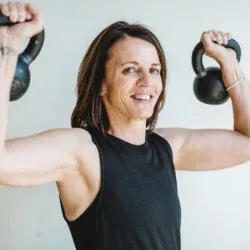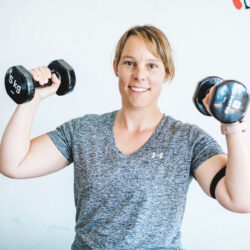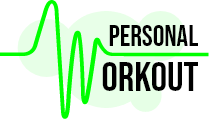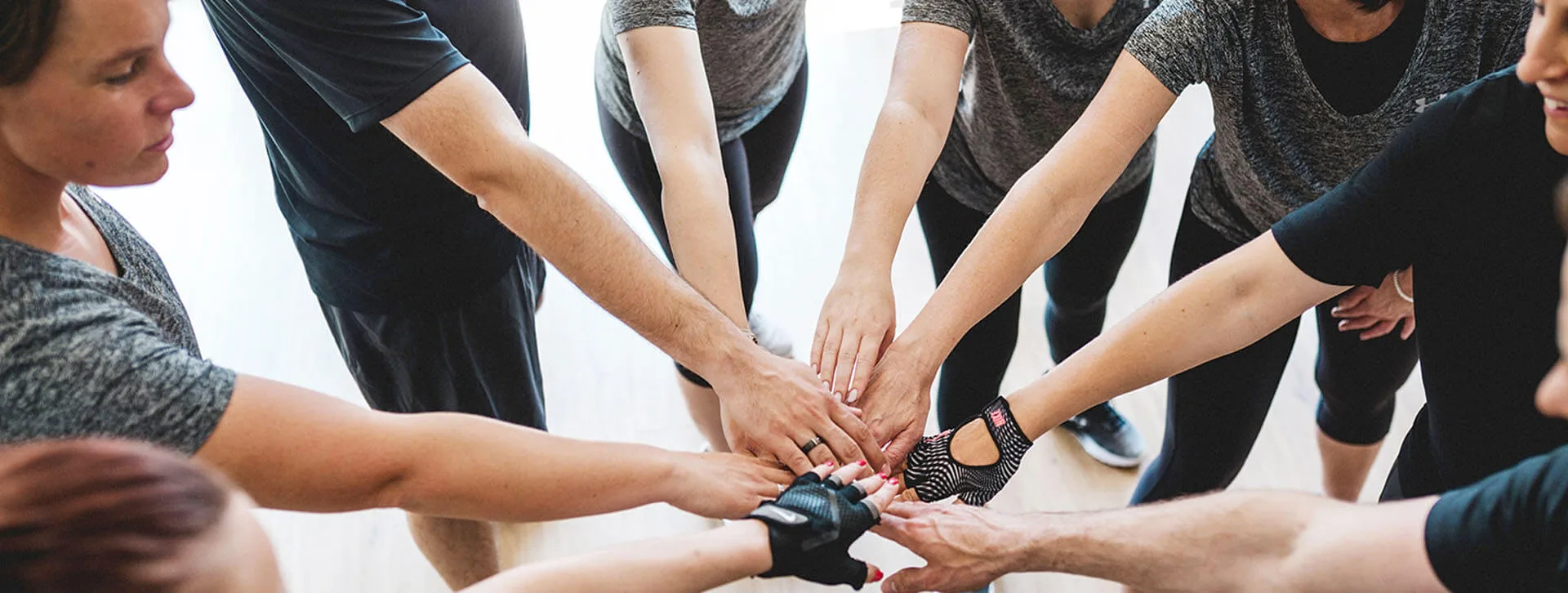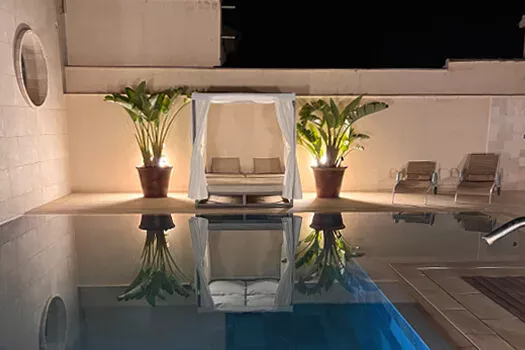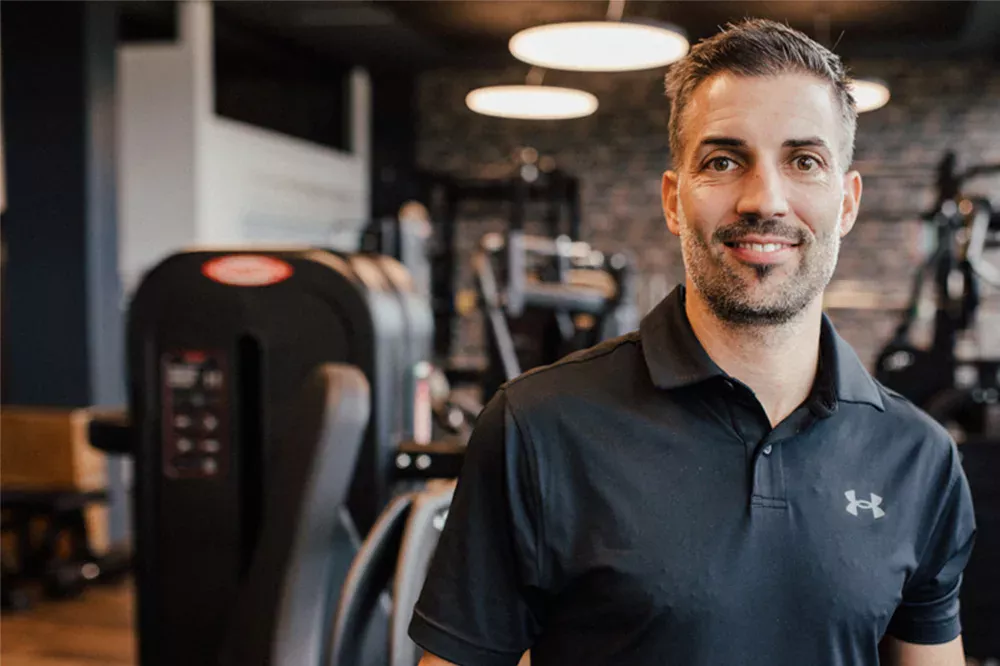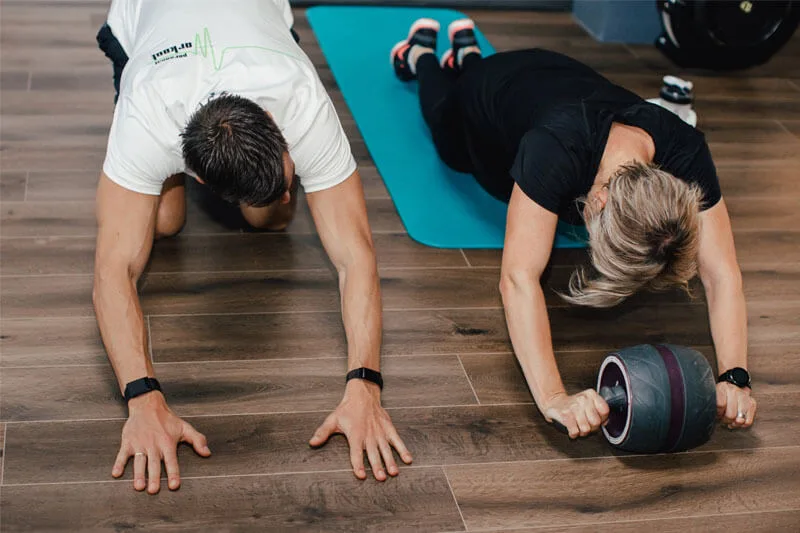Massage & Passive Stretching
Give yourself a break!
«You can’t make an omelette without breaking eggs» – everyone knows this saying. It applies to athletes as well as office workers. If the body is subjected to one-sided and intensive strain, it also needs phases of regeneration. If you don’t allow your body any rest or time to adjust, it’s only a matter of time before you overburden it. A lot can be done in terms of preventional work. However, there is still the possibility of injury, particularly due to external influences such as the impact of opponents during competition. At Personalworkout, we have experts for training AND therapy in our team. Together we are more efficient and save valuable time on the way back to a pain-free daily life, sport and/or competition.
Our massage team
Rubén Lozano

EMR-recognition and reimbursement through supplementary insurance
- Sports massage
- Foot reflexology
- Connective tissue massage
- Lymphatic drainage
For questions and to make an appointment: massage@personalworkout.ch
Nadja RUdolph
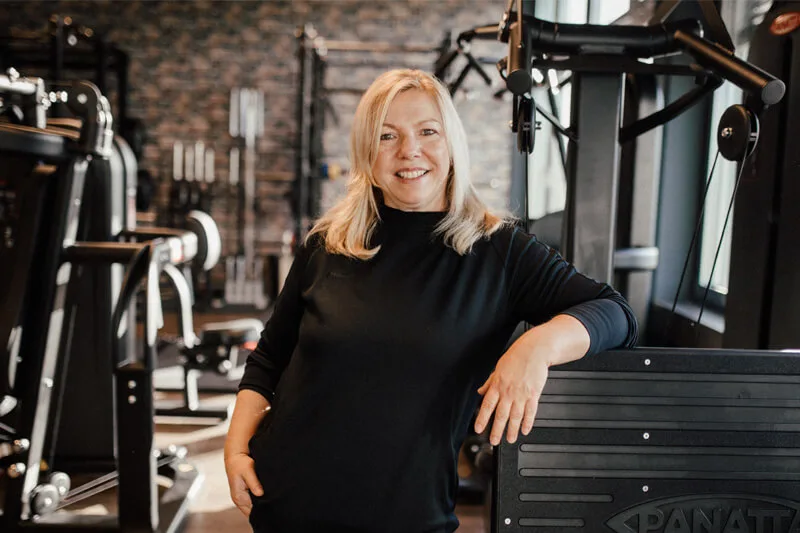
All offers on a self-pay basis
- Classic Massage
- Passive stretching
For questions and to make an appointment:
nadja@personalworkout.ch
Massage
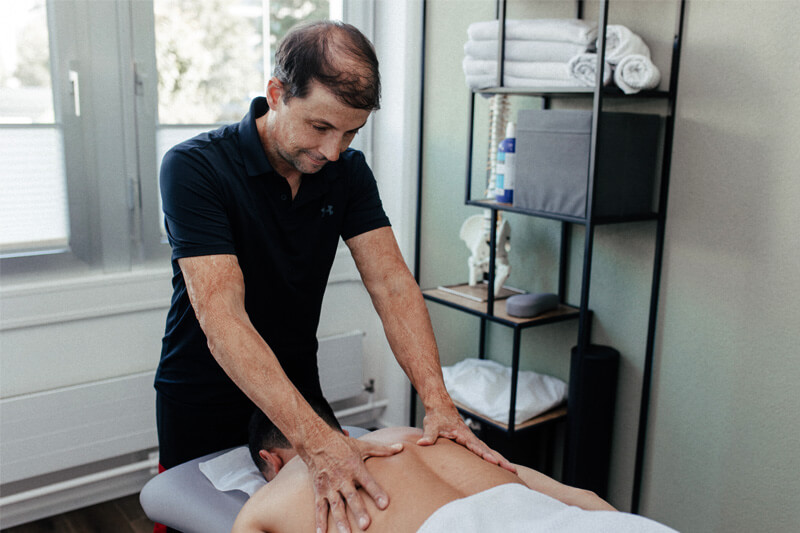
The classic massage is the most traditional and most frequently used form of massage. It mainly addresses the stresses of everyday life. During the classic massage, the body undergoes a «kneading» by the physiotherapeutic professional. You can choose between a full body massage and a partial massage (targeted treatment of regions related to the complaints).
A massage can also be used as a preventative measure against muscular tension, for example in the case of physical malpositions. The classic massage has a relaxing effect and is individually adapted to the needs of the client. It is also an excellent way to relieve everyday stress, regenerate the body and recharge your batteries.
As a rule, no technical aids are used in this form of massage. Only the hands are used on the body, so that the classic massage can be classified as a direct massage.
Foot reflexology
Foot reflexology is an alternative treatment method that can support and complement conventional medical procedures. The reflex zones on the foot reflect all organs and areas of the human body. Special manual techniques can positively influence and rebalance functional disorders. Reflexology can have a particularly positive effect on pain therapy and circulatory disorders. Foot reflexology has a generally harmonising effect.
Foot reflexology massage is used for:
- Organ disorders
- Psychosomatic complaints
- Strengthening the immune system
- Relaxation and well-being

Connective tissue massage
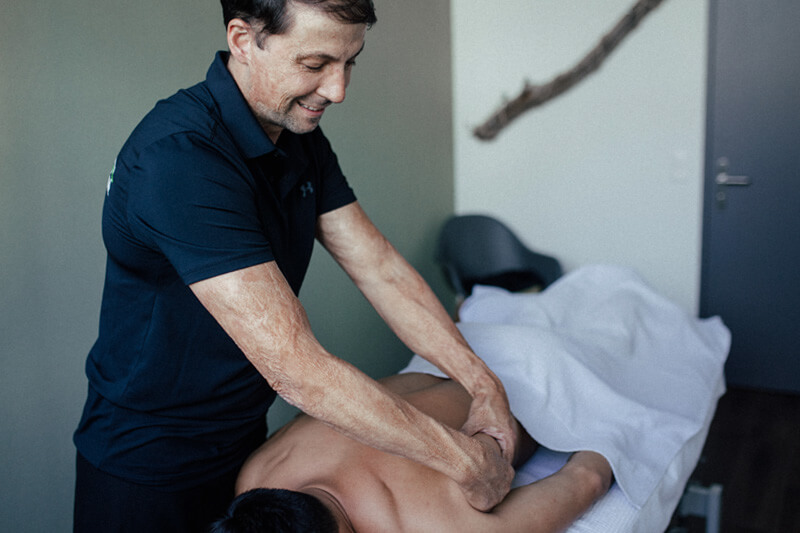
Connective tissue massage is a reflexive method in which the vegetative nervous system and internal organs are influenced by traction stimuli on the connective tissue. The aim is to achieve vegetative harmonisation.
Connective tissue massage works with skin, subcutaneous tissue and fascia techniques. It is an alternative medical form of massage.
Connective tissue massage can have a positive effect on the following conditions:
- General circulatory disorders
- Weak connective tissue / adhesions
- Organ diseases (digestive problems, bronchitis, asthma, liver and gallbladder diseases, etc.)
- Neurological disorders (Parkinson’s disease, headaches, psychosomatic syndromes, etc.)
- Hormonal disorders (menstrual problems, premenstrual syndrome)
Lymphatic drainage
Special hand movements create a slow and gentle deformation of the tissue. This enables a manual transfer of tissue fluid along the tissue pathways, including the lymph vessels. Manual lymphatic drainage is a variation of complex physical decongestive therapy (CPD).
In contrast to conventional massage, manual lymph drainage uses a specific grip technique. Manual lymph drainage is used especially after operations, tumour treatments and lymph node removals.
Manual lymphatic drainage is used for:
- Oedema (congestion of tissue fluid)
- Post-operative / post-traumatic oedema (haematoma, sprain, dislocation, muscle fibre tear, fracture, lymph node removal, scar etc.)
- For heavy legs
- For general detoxification
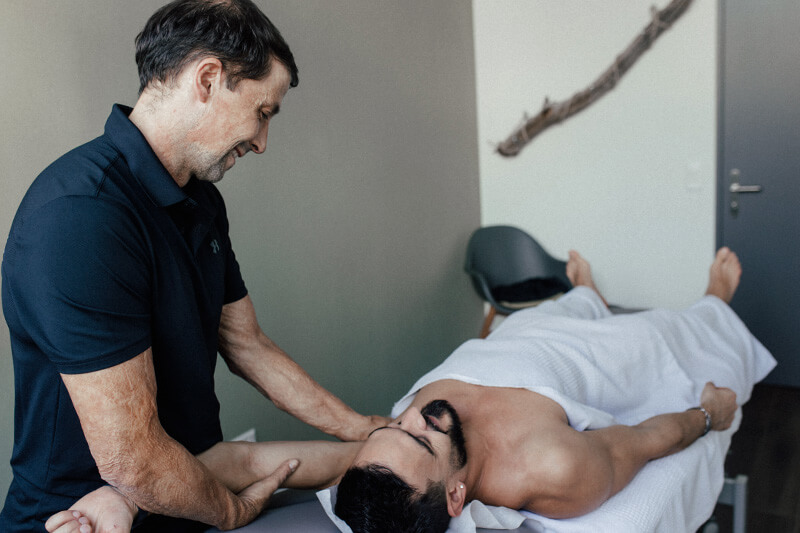
PASSIVE STRETCHING
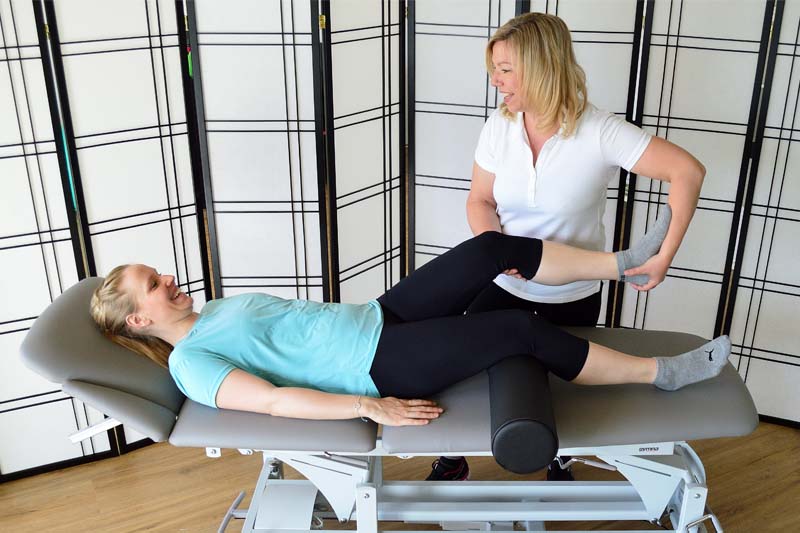
Many people are immobile or have so-called «shortenings». Unfortunately, «classic» stretching does not usually lead to the hoped-for results.
The situation is different when you are stretched passively (in our case by Nadja, a professional therapist). You will feel the difference after just one stretching session!
Our massage offer
Depending on the complaints and problems, we use different massage techniques.
Included EMR recognition and reimbursement via supplementary insurance.

You can book our massages conveniently in our online shop.
Our Passive Stretching offer
Many people are immobile or have so-called «shortenings«. Unfortunately, «classic» stretching does not usually lead to the hoped-for results.
The situation is different when you are stretched passively. You will feel the difference after just one stretching session!
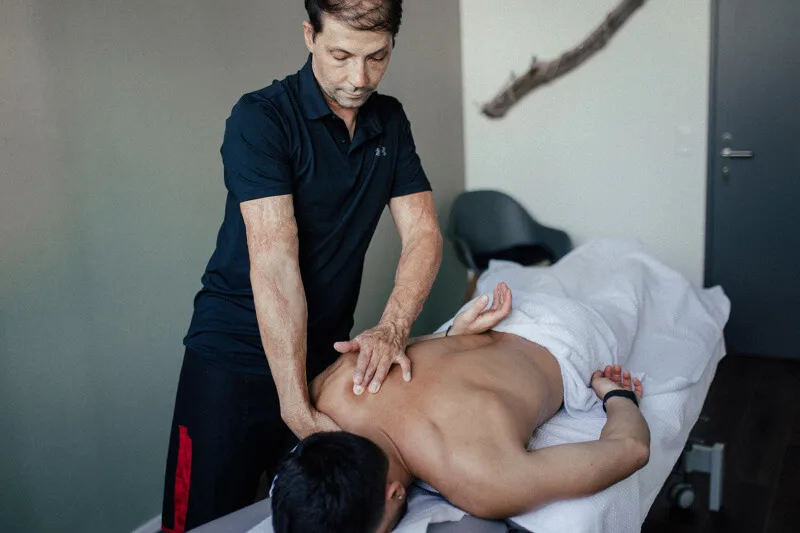
You can book your passive stretching sessions directly in our online shop!
Passive stretching is also recommended for athletes before training to maximise performance and minimise the risk of injury.
FAQS
Why Sports Physiotherapy is Good for You
As an athlete, you benefit from sports physiotherapy on various levels. It not only helps in preventing injuries but also improves your sport-specific movements. By increasing muscle strength and providing individually tailored training plans, it optimizes your performance. Additionally, it aids in alleviating pain after sports injuries and accelerates the healing process. During the rehabilitation phase after an injury or surgery, sports physiotherapy enables a gradual and pain-free return to training.
What is done in manual therapy?
Manual therapy is a gentle, painless treatment method for diagnosing and treating functional disorders of the musculoskeletal system. The therapist uses various manipulation and massage techniques to treat and mobilize the body’s structures, such as joints and muscles, passively. Depending on the diagnosis, the treatment may be supplemented with active movement exercises.
When is manual therapy useful?
Manual therapy is useful for both pain relief and the improvement of restricted joint movement, such as after immobilization, a bone fracture, a ligament tear, or surgery. It can be used to treat all joints as well as the spine. Manual therapy is also beneficial in rehabilitation, for injury prevention, and for maximizing athletic performance.
What is the difference between massage and manual therapy?
The «classic» massage is usually applied to relieve muscle tension. It aids in reducing stress by bringing the body into a relaxed state. Thus, a massage primarily enhances general well-being and is more associated with wellness. On the other hand, manual therapy is aimed at specifically alleviating pain, addressing the causes of muscular and joint-related problems, and improving the functionality of the patient’s musculoskeletal system.
Challenge of the Month
What Clients Say
